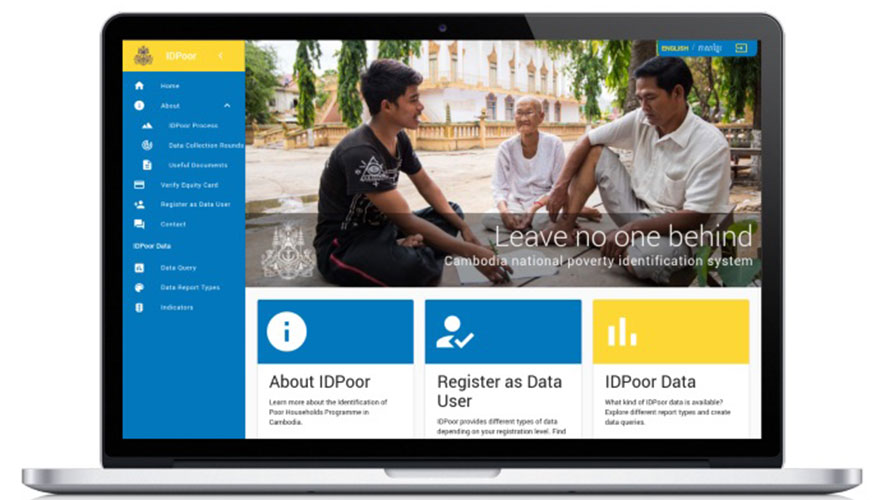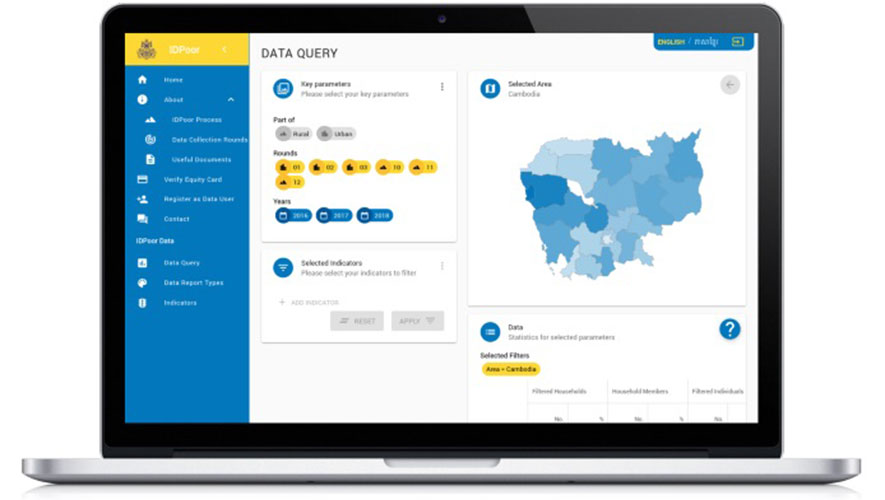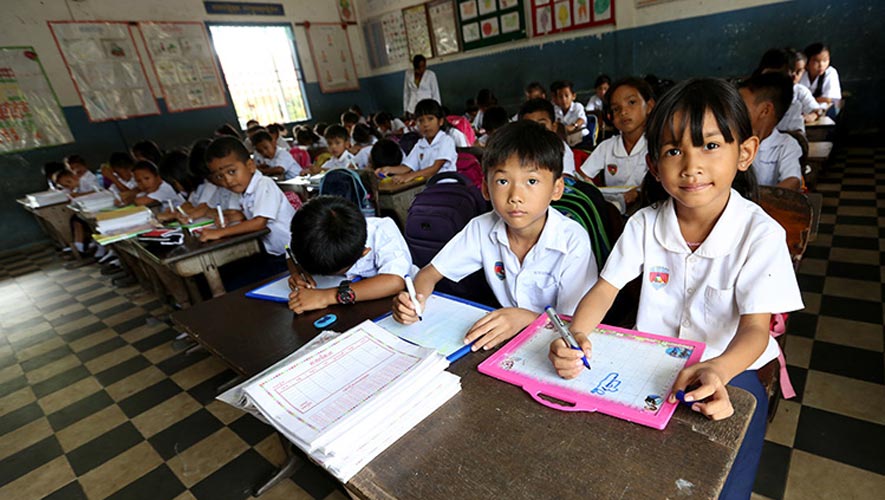The shift of governments and aid organisations away from paper-based care records and towards fully digitalised care records is a key initiative in pre-emerging and emerging economies, enabling more efficient and effective aid to the large numbers of unregistered and unbanked people across the globe.
For the latest Cambodian Business news, visit Khmer Times Business
In Cambodia, the government has been gradually implementing its own identification system called the Identification of Poor Households Programme (IDPoor), with a mission of “Leaving no one behind”, and the paper-based recorded scheme has now been transferred into a digitally recorded database.
According to a 2018 report from the United Nations Development Programme, 35 percent of Cambodians are still living in poverty, with the rural population making up the majority. The World Bank defines poverty as living on less than $1.90 a day.

Initially commissioned in 2006 by Germany’s Federal Ministry for Economic Cooperation and Development (BMZ), with support from the Australian Department of Foreign Affairs and Trade (DFAT), IDPoor is now solely led by the Cambodian Ministry of Planning, with the Government taking full responsibility for the ongoing funding of the project.
The programme started in four of Cambodia’s poorest communes, settling upon a schedule of conducting identification surveys in eight provinces each year so that all 24 of Cambodia’s provinces were eventually covered.
The goal was to create and implement a new poverty identification mechanism that could serve as a single basis for targeting the country’s poor. The identification system is a hybrid model that combines the objectivity of a proxy means test survey with the accuracy and affordability of a community-based selection process. Ultimately, this allows the governmental agencies and local or international organisations to provide essential services to the country’s poor.
In 2010 the programme embarked on a digitalisation process and began manual data entry through a management firm to provide better data quality and greater efficiency in the processes.

“Once the [annual surveys] data entry is complete, the Ministry of Planning organises data dissemination workshops for stakeholders in each province. Today, the IDPoor database is also available online through the IDPoor Information System (IIS), allowing registered users to access a set of standard reports,” explains a BMZ spokesperson.
This means that registered users can now request special subsets of the raw data, allowing them to target a specific sub-group of IDPoor households with specific services. The team also promotes the IDPoor database to partners on an ongoing basis, providing videos, leaflets, online demonstrations and workshops to explain what data is available and how they can be used to identify beneficiaries of poverty-alleviation programmes. Partners can request access to IIS from the Ministry of Planning through the IDPoor website (idpoor.gov.kh).
A comprehensive database has now been digitally recorded across both Cambodia’s rural villages and urban zones with over 550,000 households accounted for. This benefits approximately two million people by giving them access to social services such as free healthcare as well as subsidies for water and electricity costs, scholarships, social land concessions and other services.
The digitalisation of aid programmes is also an initiative now being fully adopted by one of the world’s leading humanitarian organisation, the World Food Programme (WFP). According to its recent Overview of The Programmes, Cross-Cutting Issues and Common Services report, the organisation is currently switching to e-vouchers for use by 100 percent of the world’s refugee population.
Using the SCOPE digital platform, the WFP has created a uniform entitlement system while simultaneously creating vast networks and databases of information that is available to governments and organisations.
Last year, the Cambodian Ministry of Planning – again in collaboration with the BMZ and DFAT – unveiled a useable web-based online system, created by the German consultancy group Mainlevel AG. This makes vast amounts of raw data reports available through an application programming interface (API) and is designed for third parties, such as programs solely intended to benefit poor households or for non-commercial purposes, to be able to easily navigate the digital data on file.
One organisation that is greatly benefitting from this newly designed data management tool is the previously mentioned World Food Programme. The humanitarian organisation relies on the IDPoor data to populate their interactive map of poor households so they can respond to the most vulnerable during natural disasters. International charity Save the Children also uses the IDPoor API tool to identify and help Cambodian mothers most in need of support for their maternal health programme, Nourish.
In addition, Cambodia’s own Ministry of Health is now using the system as a data source for part of their Health Equity Fund.
But more crucially at this point in time, the digital database could prove to be a vital dissemination tool in the face of the unfolding COVID-19 crisis
HE Theng Panhathun, a Director in the planning department within the Ministry of Planning, speaking with Capital Cambodia, said that while the virus makes no distinction between the wealthy and those living in poverty, these digital data banks can provide government ministries and aid organisations with the key information to provide interventions to ensure a proper response to the outbreak.
“Since both rich and poor Cambodians can be affected by the current virus outbreak, the government is aiming to provide interventions to all. However, this data will and can be used to provide direct or indirect interventions from government and other aid organisations if required to contain the outbreak,” he explained.
We were also advised that all data is being freely and openly shared with relevant bodies and the ministry is also implementing data verification techniques.
As Capital Cambodia at time of publication, figures of those killed by COVID-19 – recently upgraded from an epidemic to a pandemic by WHO – stood at more than 6,000. Therefore, ensuring the continuation of accurate data collection is key to protecting the nation’s most vulnerable citizens right now and in the future.




